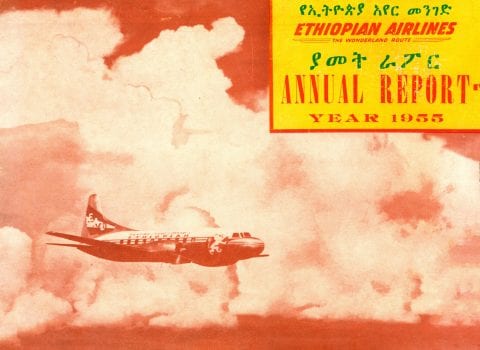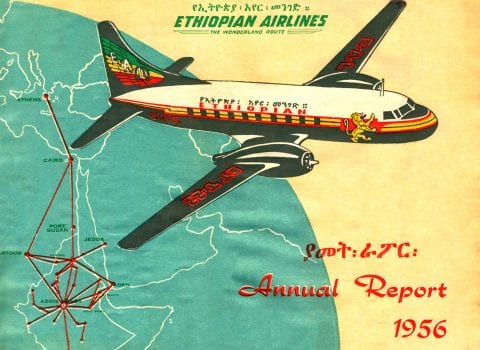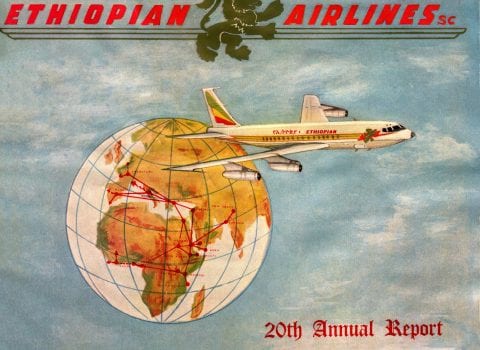Identity & Branding
The formation of national airlines by independent African nations was widely recognized as a manifestation of national pride, modernity, and self-determination. Newly independent nations proudly flew their flags on the livery of their newly established airlines, throughout their interiors for their own citizens to see, as well as internationally as symbols of national pride to be displayed around the world. Elements of national identity, in the forms of national symbols, colors, and other representations, were also incorporated throughout airlines’ branding systems and appeared on timetables, route maps, menus, annual reports, and other published material and ephemera, as shown here.
East African Airways
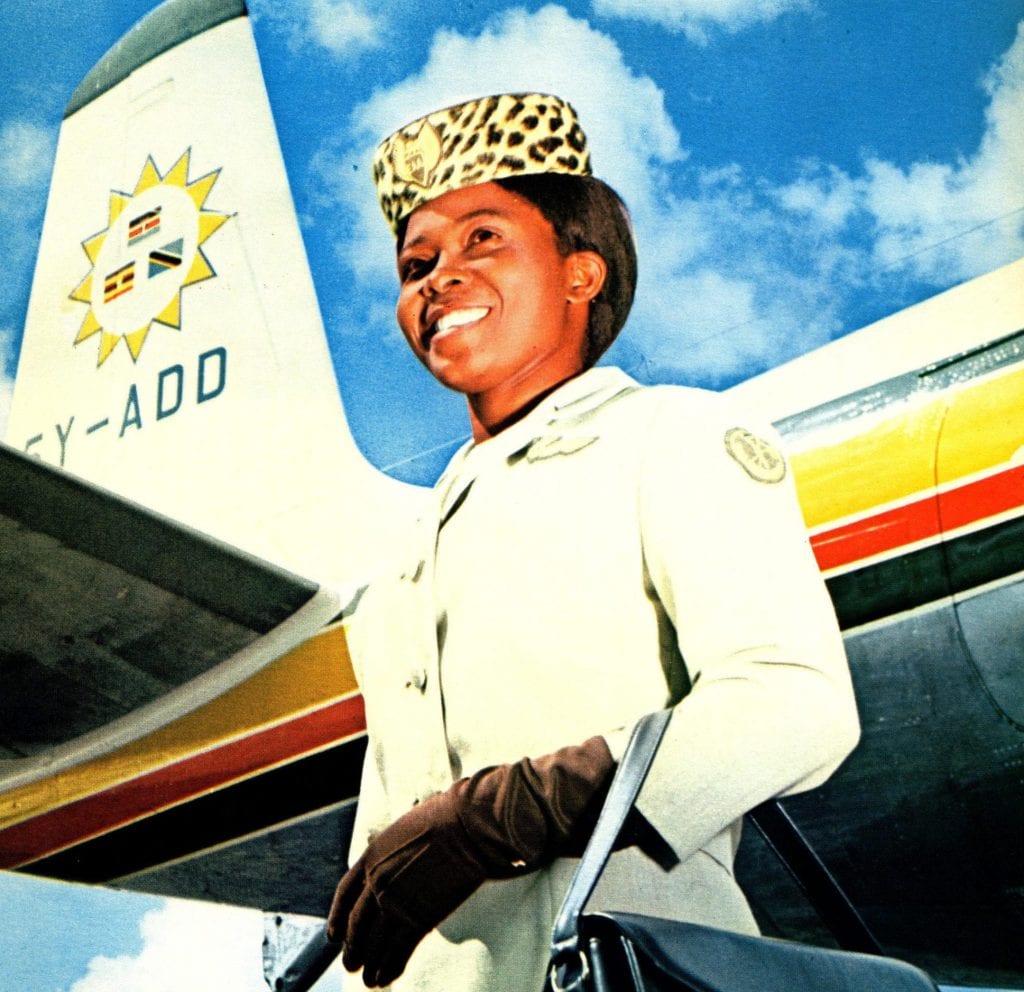 East African Airways was formed in 1946 by the colonial governors of what would become Kenya, Uganda, and Tanzania, with a network of domestic and regional routes. By 1963, each of the member nations achieved independence. Rather than establishing independent national airlines, the new governments continued to work together under East African Airways, claiming local control over their airline.
East African Airways was formed in 1946 by the colonial governors of what would become Kenya, Uganda, and Tanzania, with a network of domestic and regional routes. By 1963, each of the member nations achieved independence. Rather than establishing independent national airlines, the new governments continued to work together under East African Airways, claiming local control over their airline.
In 1964, Chief Abdullah Said Fundikira of Tanzania became the airline’s first African chairman, and BOAC, which had been part-owner of the airline, was asked to withdraw its ownership. The following year, a new livery was introduced that included a yellow sun encircling the three flags of its owners: Kenya, Tanzania, and Uganda. The airline expanded its service around the world throughout the remainder of the 1960s and well into the 1970s, with routes that extended to the United States, the Middle East, Europe, and South Asia. Due to financial and political troubles, the airline’s operations ceased in February 1977. Kenya Airways, which was formed the previous month, is among its legacies.
East African Airways 1965 annual report
Air Mali
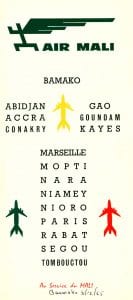


Included throughout Air Mali’s branding is the kanaga, a human figure whose origins are with Mali’s Dogon people. Initially present on the flag of the Mali Federation from its origins in 1959, it was removed following the federation’s split into the countries of Senegal and Mali. Air Mali was formed one month after the establishment of the Mali Republic in September, 1960, and a trace of the kanaga, with the addition of a winged arm, remained throughout the airline’s identity as evidenced in Air Mali’s timetables dating from 1964 and 1965. By this time, the airline’s network connected some nine cities throughout Mali and extended internationally including to Paris, Casablanca, and Accra. Air Mali continued to operate until 1989, when it closed due to financial and operational difficulties.
Air Mali Timetables, 1964-1965. George M. Foster Timetable Collection, Transportation Library.
Ghana Airways

Among the earliest African airlines to emerge during the era of independence, Ghana Airways drew from its national flag, in the Pan-African colors of red, yellow, and green, for its logo. The logo likewise featured the same five-pointed star at the center of its flag in its branding. This is included in the airline’s logo and route map cover pictured here, which date from the 1960s, as well as featured on aircraft livery, timetables, and other instances of branding and identity.
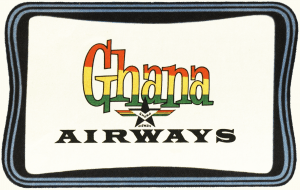
Ghana Airways Route Map and Logo. Ghana Airways File, Herskovits Library of African Studies
Ethiopian Airlines
In its earliest years, Ethiopian Airlines operated as a partnership with U.S.-based TWA, with a fleet of U.S. government surplus Douglas C-47 Skytrains. In 1945, its first year of operation, Ethiopian’s service included routes from Addis Ababa to Djibouti, Aden, Asmara, Khartoum, and Cairo, with the option for passengers to stop along routes in Gambela and Jeddah. From early on, the airline’s bold liveries carried symbols of national pride wherever it flew. The Ethiopian flag, with the Lion of Judah set atop a background of red, green, and black, was transposed onto the airline’s planes: a golden lion on its hind legs, it was featured with a stripe of red, green, and black running down the plane’s sides. The airline’s annual reports from 1955, 1956, and 1966 offer a glimpse at the airline’s branding.
Ethiopian Airlines 1955, 1956, and 1966 annual reports
More Information
Items in the exhibit are housed at Northwestern University’s Transportation Library and the Herskovits Library of African Studies. Email transportationlibrary@northwestern.edu or africana@northwestern.edu with questions, or to schedule an appointment.

